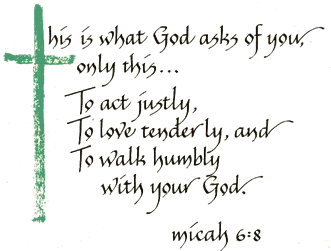catholicPittsburgh.org is the place for information, news, commentary, reflections and community building among the people of God who are renewing the Catholic Church in Western Pennsylvania.
More about us
Welcome ...
Partnering Groups
The following organizations are partners with catholicPittsburgh.org:
As the Light of the Day Lengthens
Reflections on the Fourth Sunday of Lent
By George McHale
The readings for
this Sunday:
I like to rise before dawn (though I rarely accomplish it except in winter!) and peer patiently into the grayness and watch for the first hint of a glint of color in the world around me as light gradually fills the earth. As with a Harry Potter photograph, it is like watching the universe coming into existence on that first day of creation.
“I once was blind, but now I see,” the man born blind declares after encountering Jesus.
Often, this gospel text is narrowed in interpretation to moral and spiritual blindness, but look for a moment at the simple story itself. This man had never seen the dawn, had never seen a leaf, or a spider, or a bird, or a human face, had never seen the food prepared for him or the clothes he wore, had never seen his family or his friends, had never seen Jerusalem or the Temple. And the first thing he saw was Jesus—and now he could see. Faces, flowers, beetles and bowls, and the grain, the wine, and the oil—and the light that poured around and through them all.
I was once, many years ago, fortunate enough to stand in the cathedral at Chartres. Two impressions remain with me still. The first was that high in the absolute blackness of the west nave, seemingly hovering in the air, spun a brilliant, radiating wheel of color—its rose window. The second was even stronger. The light from the windows did not reflect off the floor as happens with lesser glass. Rather, the color, especially the deep rich blue that Chartres is known for, diffused into the air, and the air was so thick with it that I wanted to reach out and grasp it and could taste it as I breathed it in.
It was Suger, abbot of the 12th century abbey of Saint-Denis in the north of Paris, who, while not a theologian himself, took to heart the new wave of theology emanating from the school of Chartres and decided to implement it in building the abbey church and filling the walls with some of the first stained-glass. The rationale: God is pure light, and, therefore, unseeable and blinding to human eyes. But, just as color manifests light to us, so does creation manifest God.
In point of fact, when we see, nothing leaves our eyes and moves out to the object itself; rather the light reflected from the object proceeds into our eyes, so that, in point of fact, all we actually see is the light itself, broken and bent into a thousand shades.
However, as the anointing of David (him with the beautiful eyes!) reminds us, we see only the face, God, however, sees the heart. If we say we can see, we are blind, as Jesus tells the Pharisees. To see truly, we must accept that our vision does not reside in us but in the light of the world—as Jesus proclaims himself. And to the degree we break the world into millions of pieces, we miss the one light.
And so, as the light of the day lengthens (the etymological origin of “Lent”) and we grow toward the blinding light of Easter and God made manifest in the humanity of the Christ, whose are the eyes with which we see; what is the vision always before us that we ignore?
- By JoeMertz at Mar 3 2005 - 12:21am
- Reflections
Micah 6:8

©1996 Cards by Anne
Used with permission